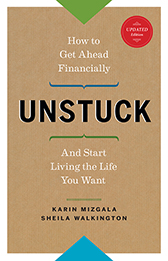 Canada frequently ranks high on lists of the best countries to live, but when it comes to fees for financial products, we rank among the worst in the developed world.
Canada frequently ranks high on lists of the best countries to live, but when it comes to fees for financial products, we rank among the worst in the developed world.
While the securities regulators are taking a hard look at how investment products are priced and delivered in Canada, I’ve noticed recently that clients are also asking more questions about investment fees and challenging the value of the financial advice they receive.
How confident are you that you’re getting the best financial advice?
A great first step is exploring the options each of us has to purchase financial advice. Finding the best solution for you, one that delivers peace of mind and moves you closer to your goals, is well worth the time and energy required.
Let’s start by exploring the three most common service-delivery models consumers can choose, and how advisors are paid differently in each.
How Financial Advisors Are Paid?
The most prevalent model in the financial-services industry is commission-based. In this approach, the financial advisor sells products, typically mutual funds or some other investment product, and receives a sales commission as compensation. In some instances, they will also receive what is called a ‘trailing commission’ which compensates the advisor for providing ongoing advice and service.
With commission-based financial advice, clients are often unaware of how much, or to what extent, an advisor is being paid for their recommendations. This is despite the introduction of new fee disclosure rules designed to improve how the financial industry reports and discloses information to investors. The payment of sales commissions is usually embedded in the cost of the financial product being purchased. Fees are typically in the 2% range.
The second service-delivery model for financial advice is based upon the size of an individual’s investment account. Fees are calculated as a percentage of assets under management and often referred to as a ‘AUM’ approach. An advisor will charge a fee based on the size of the client’s assets being managed – typically a percentage of the total portfolio. For example, it’s typical that someone with a $250,000 portfolio would pay 1.5%, or $3,750 annually, for a financial advisor to manage their investment portfolio.
The first two models described above are tied closely to the delivery of investment advice. The third model, called ‘advice-only,’ is gaining popularity and is being embraced by many advisors that offer guidance outside of standard investment advice, including debt and cash-flow management, retirement and estate planning. With this type of service delivery, clients pay a fee directly to the advisor for services rendered. It’s not tied to product sales, or size of assets, in any way. Fees typically range from $2,000 – $5,000 for a comprehensive financial planning engagement.
Next, let’s take a closer at the pros and cons of each service-delivery model – from a consumer’s perspective.
Commission-Based Advice
With the commission-based model, there are no ‘out-of-pocket’ costs for the client, making it accessible to all income and net-worth levels. As a client, you will never have to write a check to pay the financial advisor for their investment advice. To many, this seem like the most sensible way to obtain valuable financial advice. However, there are several drawbacks from receiving financial advice from commissioned advisors.
First off, the information you receive may or may not be biased. Commissioned sales people are paid to, well, sell. Their priority is to convince you to purchase whatever product or service they are incentivized to sell. When it comes to financial advice, commission-based financial advisors do not have a fiduciary responsibility – to put your interests above theirs. The only obligation they have is one of suitability – not to sell you any financial product that is not suited to your unique financial situation.
A second drawback with commission-based advisors is that the advice is almost always focused on investment products. There is often limited guidance on other aspects of a client’s financial well-being, like goal setting, debt minimization, or cash flow management.
Asset Under Management (AUM)
With the asset under management, or AUM service-delivery model, there is more cost transparency. The client pays a fee directly to the advisor based upon the size of investment portfolio being managed. It’s also relatively free of bias – an advisor’s income under this model is not directly tied to specific financial transactions or products – it’s strictly based on the portfolio size.
Since the advisor is paid a percentage of assets managed, there is certainly a vested interest in the growth of the client’s portfolio, to the benefit of both parties. A shortcoming, however, is that the advisor’s income is still tied to assets; they may require sizable investment minimums so that the portfolio under management generates a sufficient amount of fees.
Investors with sizable investment portfolios also run the risk of paying too much for investment advice. As a portfolio grows, the time required to manage it by the financial advisor doesn’t necessarily increase. Investors with high-value portfolios must be diligent in negotiating a lower percentage AUM rate.
The commission-based and AUM service-delivery models cater to investors. But investments are just one part of an individual’s financial well-being, which brings us to the third service-delivery model for financial advice.
Advice-Only
In the advice-only model, the benefit is two-fold. First, clients may consider the advice more trustworthy because it is not tied, in any way, to the advisor’s vested interests or payment of commissions.
Second, advice-only clients tend to be more motivated and engaged because the cost of the service is coming directly out of their pockets. As a result, they feel more empowered, and in control of their finances. And they tend to have a better understanding of how their money can work for them, and the impact of their day-to-day financial decisions.
There is, however, a downside to the advice-only model. Clients must pay for the service directly from their household’s budget. While clients appreciate the unbiased, comprehensive nature of the advice provided, the advice-only model can be difficult for those with lower incomes or struggling with debt.
Since advice-only advisors are not licensed to sell or manage financial products, they are not a “one-stop-shop.” However, they can provide a second opinion, and introduce or coordinate on your behalf with other trusted investment, insurance and other financial professionals.
A Final Thought
While there are great advisors under all the financial advice models, I feel strongly that financial planning advice is best delivered by an advisor whose compensation isn’t directly tied to investments or financial products. This is the reason that Sheila and I founded Money Coaches Canada and why hundreds of clients work with us today.
At the end of the day it come down to trust and the type of financial advice you’re looking for. Take the time to educate yourself, listen to your gut and make an informed decision. A small, up-front investment of time will pay you significant dividends, in terms of money saved and frustration avoided, over the long-term.



Thanks for the helpful and articulate breakdown on how financial advisor compensation works.
For anyone wondering “how much should I be paying in investment fees?” this may be another helpful resource- https://www.steadyhand.com/asset/2014/05/05/the%20fee%20tree.pdf
Thanks Chris. Great resource!
Awesome article! Thank you for the very informative article.